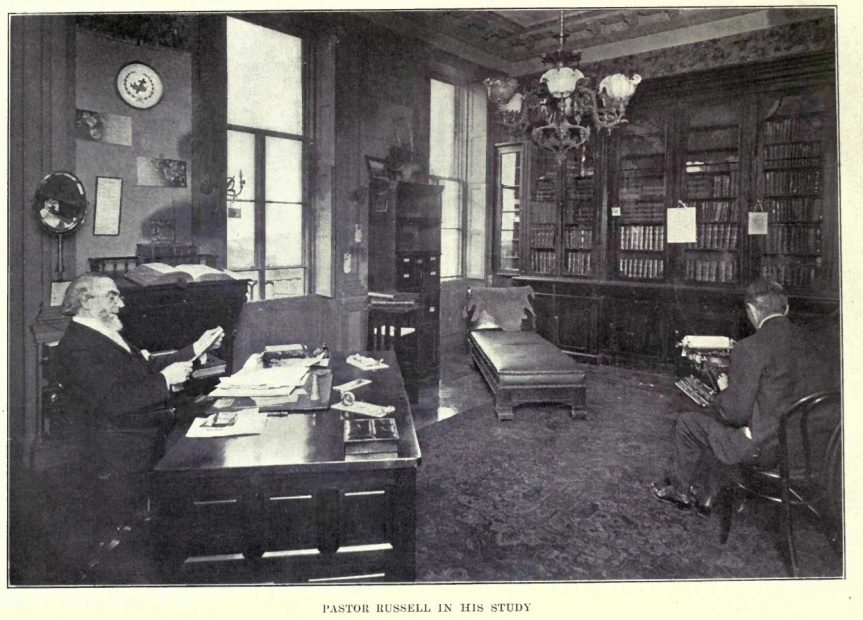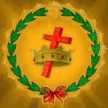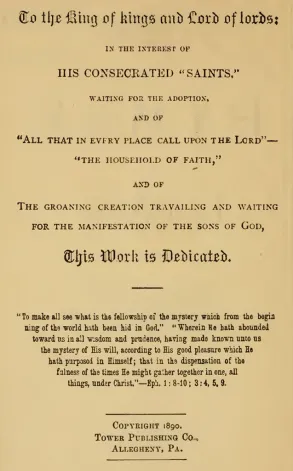All People That On Earth Do Dwell – Hymns of Dawn No.11
Bible Scriptures Associated With This Hymn
Psalm 100 (ESV):
His Steadfast Love Endures Forever – A Psalm for giving thanks.
“(1) Make a joyful noise to the Lord, all the earth!
(2) Serve the Lord with gladness! Come into his presence with singing!
(3) Know that the Lord, he is God! It is he who made us, and we are his; we are his people, and the sheep of his pasture.
(4) Enter his gates with thanksgiving, and his courts with praise! Give thanks to him; bless his name!
(5) For the Lord is good; his steadfast love endures forever, and his faithfulness to all generations.”
Lyric
1.
All people that on earth do dwell;
Sing to the Lord with cheerful voice;
Him serve with fear, His praise forth tell,
Come ye before Him and rejoice.
2.
The Lord ye know is God indeed;
Without our aid He did us make;
We are His flock, He doth us feed,
And for His sheep He doth us take.
3.
O! enter then His gates with praise,
Approach with joy His courts unto:
Praise, laud, and bless His name always;
For it is seemly so to do.
4.
For why? The Lord our God is good,
His mercy is forever sure;
His truth at all times firmly stood,
And shall from age to age endure.
The following is excerpted from an article from the Reprints of the Original Watch Tower and Herald of Christ’s Presence (R3053-3054).
ISRAEL’S TYPICAL TABERNACLE
“Enter into his gates with thanksgiving, and into his courts with praise.” — Psalm 100:4 .
Only the one priestly family, consisting at first of the five persons, Aaron and his four sons, were permitted to enter the Tabernacle proper, whose curtains … were kept down … [that others] might not seek to look in when the officiating priests lifted the curtain and passed under it, a divine law was promulgated forbidding them to look, and prescribing a penalty of death for disobedience. — Numbers 4:19,20.
All of this has a deep significance in connection with the proper understanding of the meaning of these types. As the Court represented the condition of justification through faith in the sacrifice for sins in the atonement accomplished by the high-priest, so its brazen altar represented primarily the perfection of the man Christ Jesus, upon which his offering was accepted of God, as our sin-atonement, sanctifying in turn any offering of others that might be presented upon it. Likewise the laver taught in type a cleansing of the flesh, and a putting away, so far as possible, of all filthiness of the flesh and spirit on the part of those in the justified condition as preparatory to their entering the Tabernacle itself. As only the priests were permitted to enter the Tabernacle, or even to see its glories and beauties, the teaching is that as the Court represents one condition, the “Holy” represents another, and the “Most Holy” still another condition. As the priests, before being consecrated to the priestly office, must be Levites, so those who would be of the Royal Priesthood must previously have been justified believers, otherwise they would not be acceptable as members of the Royal Priesthood. Their entrance as priests into the Holy symbolizes their change of nature — from justified human nature to that of “new creatures,” begotten of the spirit. The Holy represents the state or condition of these new creatures in this present life, while still in the flesh, and only reckonedly new creatures, while the Most Holy represents their future state or condition, in which they will be perfected as new creatures by participation in the first resurrection — beyond the “Vail.”
Our Forerunner, the “High Priest of our profession,” or order, passed through the Court condition as the perfect man, presenting himself in consecration when thirty years of age; and then passed from the Court condition into the Holy, the sanctified or new creature condition, when begotten of the holy spirit. The three and a half years of our Lord’s ministry are represented in the Holy of the Tabernacle; and as the first veil represented his consecration to death, so the second veil represented his actual death, beyond which he arose in the perfect spiritual condition — the Most Holy. In all this he was the Forerunner of those who will constitute the Royal Priesthood, his house, the members of his “Body.” We by nature are sinners, and hence must enter the Court condition of justification through faith in our Lord’s sacrifice; we must be cleansed from the defilements of the flesh, so far as possible, through the word spoken unto us, represented in the washing at the Laver; and then we must make our consecration full and complete, represented by the veil at the door, if we would enter thus into the Holy, enjoy the privileges typically represented in the light of the Golden Candlestick and the Shewbread and the Incense Altar, which signify the light, the truth, and the spiritual privileges, praises, prayers and communion which we have with the Lord as members of the body of Christ, this side the second veil. And for all who shall finish their course faithfully and joyfully, there remains beyond the second veil of actual death a glorious share in our Lord’s resurrection to perfect spiritual conditions, to be partakers of the divine nature and to behold his glory in the first resurrection.
The natural man, even though justified … cannot see into, cannot discern, cannot appreciate, cannot enjoy, the privileges of the consecrated. He can hear through the priests some description of the glorious things beyond, but he cannot fully comprehend them or see their beauty — except by becoming a priest — by consecration, by self-sacrifice to the Lord. …
Although many others of the ministers of the nominal church, as well as of the laity, have reached the position of justification through faith in the Lord’s redemptive work, and although some of them have washed at the brazen laver, purifying their lives through the Word of truth, yet comparatively few have gone on to take the step of full consecration necessary to their becoming members of the Royal Priesthood — necessary to their having the right to enter into the Holy, to discern the glorious truths represented therein, “the deep things of God,” which can be seen only in the light coming from the Golden Candlestick, symbolizing the enlightenment of the holy spirit. But if the word “ministers” be used in the Scriptural sense, as signifying servants — persons devoted to the service of God, consecrated to do His will even unto death, then the term “minister” will be applicable, not only to those of this class who do public preaching, but to those of this class also who with different talents are serving the Lord and laying down their lives for the brethren in other ways public and private.
Human systems, misnamed churches of Christ, have raised false standards on the subjects of the priesthood, and have separated God’s people contrary to his arrangement, into “clergy” and “laity.” Very shortly now the Lord will show how different is the divine standard of measurement; for surely then will be demonstrated what our Lord and the apostles explicitly declared, that “not many wise men after the flesh, not many mighty, not many noble, are called” and accepted into his priesthood; but chiefly “the poor of this world, rich in faith, to be heirs of the Kingdom.” — 1 Corinthians 1:26, James 2:5.
Amongst the Lord’s priests will be found some very lightly esteemed amongst men, some who have been mechanics or farmers or laborers or housekeepers, but whose hearts were fully devoted to the Lord, and whose ministry consisted in doing with their might whatsoever their hands found to do, as unto the Lord — doing good unto all men as they had opportunity, especially to the household of faith — laying down their lives for the brethren. When the lists shall be proclaimed doubtless the names of many highly esteemed amongst men, the names of many great and noble and wise and learned, honored of men and expected to be honored of the Lord, may be found wanting; because, in their love for the approval of men they sought not exclusively the honor which cometh from God only — because either of their failure in not exercising the proper faith in the ransom, or because of their failure to exercise the proper consecration — devotion of their lives to the Lord’s service.
It is to this priestly class that the Golden Text is applicable. Their thankfulness to the Lord for his mercies and blessings leads them to count not their lives dear unto themselves, but to lay down their lives willingly in his service. Their hearts are filled with praise, because, having made consecration of themselves, and having entered thus the courts of the Lord to be seated with Christ in heavenly conditions, the heavenly light and food supplied them enables them to rejoice exceedingly even in tribulation, even in matters which otherwise, according to the flesh, without the strength and enlightenment of the truth, would discourage them and cause them fear. Because they have entered into this fellowship with the Lord in his sufferings, with his spirit of appreciation, therefore they may be joyful even in the house of their pilgrimage — and when the pilgrimage of the present life is ended, and as new creatures they shall pass beyond the vail, there shall be fulness of joy for them as they enter into the joys of their Lord in the full and complete sense — made like him, seeing him as he is, and sharing his glory.
The History Of This Hymn
Tune/Music – (OLD HUNDREDTH): by Louis Bourgeois, Genevan Psalter, 1551.
Author – William Kethe (d.1594) — st. 1-4, 1561.
A 5th verse was added by Thomas Ken in 1674 which is not included in the Bible Student’s Hymns of Dawn hymnal due to its reference to the trinity in the words “praise Father, Son and Holy Ghost” – which is not a Bible Truth, as Jehovah God the Almighty Father is ONE, Jesus is Jehovah God’s firstborn Son, and the holy spirit is the invisible power and influence of God — which each begotten child of God is blessed by God’s grace and mercy to develop within themselves through studying the Scriptures, prayer and effort —putting theory into practice in each waking and conscious moment of each waking and conscious moment of while here on earth so that the “fruits of the Spirit” can be manifested in those who earnestly seek to belong to the body of Christ and inherit immortality and incorruptibility and Divine nature in the first resurrection.
The “fruits of the Spirit” are listed in Galatians 5:22-23:
“But the fruit of the Spirit is love, joy, peace, patience, kindness, goodness, faithfulness, gentleness, self-control; against such things there is no law.”
Here are some free online articles in relation to the Heavenly Father — Jehovah, and his Son — Christ Jesus — “a ransom FOR ALL … to be testified in due time” (1 Timothy 2:6), as well as, about the holy Spirit (the invisible power and influence of God) with clear explanations about why the anti-Christ teaching of “the trinity” — introduced by the Roman Catholic Church system (the “Beast” in the Book of Revelation) — is not what the Bible teaches. The Bible Student Movement does not support the teaching of purgatory nor does it support the Roman Catholic System’s teaching about people being sent to a place where they burn up forever, which certainly does not reflect the perfect love of God — the Almighty Creator of all things.
Hence, for the interested Reader, we urge you to consider the following articles and posts:
The Doctrine of the Trinity – Mystery or Confusion by Br. David Rice.
http://www.heraldmag.org/1999/99nd_3.htm
The Origin of the Trinity – From Paganism To Constantine by Sr. Cher-El L. Hagensick.
http://www.heraldmag.org/olb/Contents/doctrine/The%20Origin%20of%20the%20Trinity.htm
Facts About the Trinity
http://www.heraldmag.org/olb/contents/doctrine/FACTS%20ABOUT%20THE%20TRINITY.htm
God and the Trinities
http://www.heraldmag.org/literature/doc_42.htm
Development of the “Trinity Doctrine” by Br. Tom Gilbert.
http://www.beautiesofthetruth.org/Archive/Library/Doctrine/Mags/Bot/90s/2010d.pdf
Understanding John 1:1 by Br. Richard Doctor.
http://www.beautiesofthetruth.org/Archive/Library/Doctrine/Mags/Bot/90s/2010d.pdf
Father, Son and Holy Spirit
https://biblestudentsdaily.com/2016/06/23/father-son-and-holy-spirit/
What Is the Heavenly Father’s Name
https://biblestudentsdaily.com/2017/06/27/gods-name-what-is-the-heavenly-fathers-name-that-we-are-to-hallow-and-why/
Jesus – The Name
https://biblestudentsdaily.com/2017/07/05/jesus-the-name/
The Doctrine of Christ – Booklet
http://www.biblestudents.com/docs/DoctrineChrist.pdf
Hymn Book Purchase
The Hymns Of Dawn (hymn book) can be purchased at:
The Chicago Bible Students Online Bookstore: https://chicagobible.org/product-category/books/page/4/
The Dawn Bible Students Association: http://www.dawnbible.com/dawnpub.htm
Acknowledgment & References
- Br. Charles Taze Russell

Br. Charles Russell—the founder of the Bible Students movement, who is the compiler of “Poems and Hymns of Millennial Dawn” which was published in Allegheny, Pa., in 1890. This Bible Students’ devotional originally contained a total of 151 poems and 333 hymns.
Later on, the hymns from this book formed a basis for the hymnal titled ““Hymns of Dawn” which was published by the Dawn Bible Students Association in East Rutherford, New Jersey (USA) and the 1999 edition contains a total of 361 hymns.
- hymnary.org
The URL of this post:
https://biblestudentsdaily.com/2018/01/06/all-people-that-on-earth-do-dwell-hymns-of-dawn-no-11/




